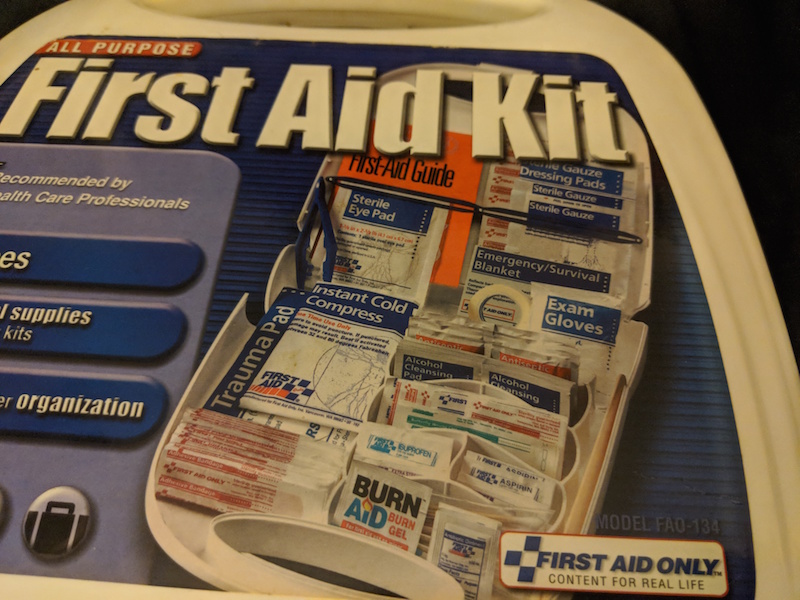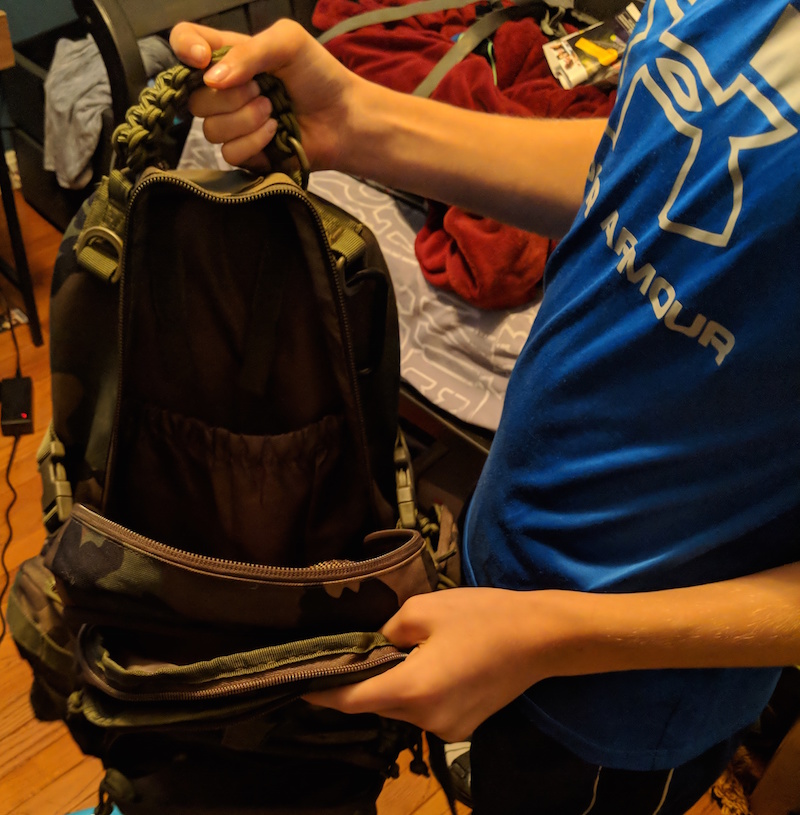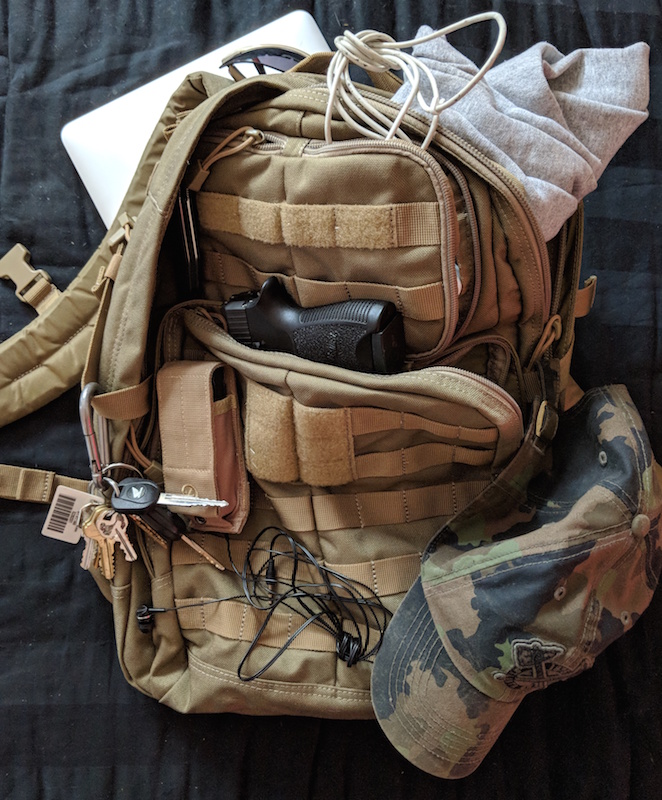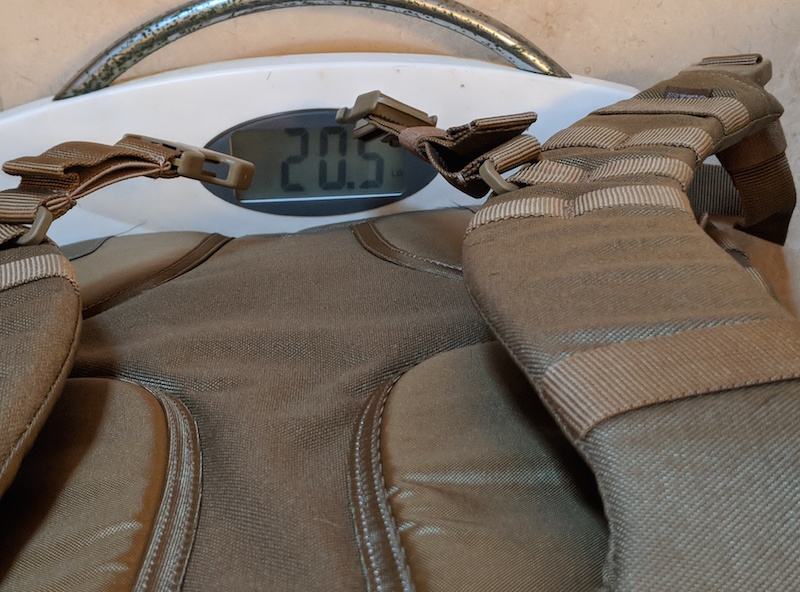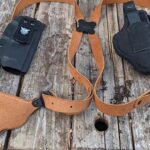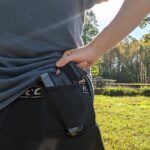Note: This article does not constitute legal advice, and is for informational purposes only. It is recommended that you conduct your own inquiries into the legality of any issue contained in this article.
I’m a huge advocate of having some sort of medical bag as part of your EDC kit. There are a ton of first aid and medical bags out there for purchase. However, I chose to build my own medical bag.
Going through my medical supplies and doing inventory, I began to ponder whether it was better to buy or build your EDC medical kit? It’s far better to build your own first aid kit rather than rely on a purchased version. Only you know the limits of your medical knowledge. Because there are very real risks involved with administering medical treatment, it’s best to buy only those items you know how to use effectively and correctly.
Table of Contents
Why Do You Need A Medical Kit?
Accidents happen, and you’ll be glad you have a first aid kit if and when the time comes you actually need it. We live in a perilous world. If you’ve ever watched the show 1000 ways to die, you’ll wonder how we survive day to day life. Those cases are extreme, but we do live in a world where mass shootings are a real threat to your security and those around you.
Having an EDC First Aid/Trauma kit can be the difference between life and death for you, a loved one, or a complete stranger. Being able to slow or stop the bleeding from a gunshot wound until medical professionals arrive could mean saving a life. Having access to OTC aspirin can be convenient for a headache. However, it can also make a world of difference to the stranger on the subway who’s having a heart attack.
Beyond the life-saving applications of your EDC medical bag, it is a very convenient way to prepare for the everyday aches and pains we all suffer from. Sometimes, the convenience of having OTC medicines and bandages makes carrying your first aid kit worthwhile.
The Basics Of A First Aid Kit
Outfitting your EDC medical/trauma kit should reflect your level of knowledge in the medical field. If you don’t know when or how to properly use a tourniquet, then you’re carrying one around with the intent of having someone instruct you when the time comes to use it. While it is entirely possible that someone with this kind of medical knowledge will be on-site when an emergency happens, you should not count on it.
However, every first aid kit should include some basic gear. I recommend having at a bare minimum, the following:
- Aspirin
- Ibuprofen (commonly referred to as Advil/Motrin)
- oral antihistamine (help with allergic reactions)
- medical tape
- gauze bandages (varying widths)
- bandaids (various sizes)
- eye drops/eyewash (for exposure of eyes to abrasive or corrosive material)
- sanitary wipe
- burn gel (or other burn treatment)
- nitrile gloves (no latex)
- emergency blanket(s)
- electrolyte replacement tablets
- quick clot
- trauma pad/battle dressing
- trauma shears (a.k.a. scissors)
- antibiotic creme
- hand sanitizer
Advanced First Aid/Trauma Kit Items
Of course the above is not even remotely close to a comprehensive list of items you can carry. However, you should know how and when to deploy any given item in your kit. You should be able to do so confidently, for both your personal security and your patients well being.
Unfortunately, being able to defend your decision to act a certain way during a crisis may be necessary should the worst happen. Also, your patient (or their caregiver) may be reluctant to let you assist if they feel you are hesitant or unsure.
Your EDC backpack is not meant to function as an EMT’s medical bag. You’ll be carrying other everyday items as well, so you should allocate space in your pack according to the gear you plan to carry.
Below are a list of some additional medical items you may want to consider if your medical knowledge allows and you have access to them:
- tourniquet
- sutures
- CPR mask (adult/child)
- epipen (doctor prescription required)
- IV (drip bag with fluid, needle, tubing, etc.)
My apologies if I missed anything on the IV item, I’m not familiar with it, so it’s not in my pack.
Setting Up Your EDC First Aid Kit
Once you’ve decided on the items for your kit, you’ll actually need to set it up. The methodology you use for this is not dissimilar from that of setting up the rest of your kit. Take a look at this article for more detail. First, you’ll need a container or bag that will hold all of your contents. Second, you’ll need to organize the items in such a way that makes sense.
Housing Your Supplies
Figuring out the bag size to house your med kit is very similar to the process for selecting the size for your EDC bag. The first thing you need to do is lay out all of the medical supplies so you know generally how much space you’re going to need. Group similar items, and make note of any awkwardly shaped items or items that will push the boundaries of your kit.
There are a few key differences between your everyday carry med kit setup and your general EDC bag setup. First, you’ll want something where the internal storage pockets are clear. This will allow you to easily see what is allocated to which pocket. Second, you’ll want the kit to unfold, or unroll, to be able to access multiple pieces of your kit simultaneously.
Organizing Your Kit
While your kit may be densely packed, you’ll want to be able to access things without having to disturb the other items too much. Having to rip your kit apart to get to your tourniquet means your kit can be in disarray when you look for the next piece of medical equipment.
Also, you could potentially have to treat multiple patients in different locations at the onset of an emergency. It’s essential that you be able to pack up your first aid kit and move on quickly and efficiently. You may have to triage patients based on your limited supplies and knowledge.
Furthermore, if you are injured while treating someone, it’s better for someone to take over your kit with it organized. Otherwise, they will end up wasting time fumbling through an already unfamiliar kit, that’s now disorganized, while under duress.
This brings me to my final organizational tip. Label, Label, LABEL! Take stock of everything in your kit, its name, and location. Should someone need to administer aid to you or assist you with treatment, they’ll know exactly where to find the item you instruct them to retrieve. While you’re at it, make note of expiration dates on medicine and supplies. This way you’ll be sure to know when to replace those items before expiration.
Know the Three C’s Of First Aid
While you are equipped to handle most small medical emergencies, it’s important to know what to do when your expertise is exhausted. Ideally, you’ll never need to utilize the three C’s but just in case here’s what to do should you encounter a situation you can’t handle alone.
Check
Check your surroundings. Ensure that you as the caregiver are not also putting yourself in danger while administering care. If the person has collapsed due to smoke inhalation, and you try to treat them in a burning building, it’s unlikely to turn out well for either of you. I recommend that you only move the patient if you are sure it is not going to do more harm than good. If you cannot safely treat them, don’t add yourself as another body for EMT staff to treat. Do what you can, safely.
Once you are sure of safe surroundings, check patient responsiveness. See if they are cognizant of what’s going on. Ideally, they’ll be able to instruct you on pain location. In an active shooter situation, are they hit in multiple places or just one? Do they have chest pain from the onset of cardiac arrest? These things will help you decide how to act, and potentially give you indicators on what the problem is. If they are unconscious, check their vital signs. There’s no sense in wasting time on a dead person if there are potentially multiple victims.
Call
Call out to bystanders for assistance. In my CPR training, I was taught to single out an individual in the crowd and tell them to dial 911. The best way to do this is to point at the person and declare in an authoritative voice “You, in the blue shirt, dial 911, now!” At this point, they can relay messages from the dispatcher to you, and you can communicate answers to them. They will also be able to provide location and situation details while you work on the patient.
If no bystanders are around, the onus falls on you to call 911 or other emergency numbers. Place the phone on speaker to facilitate first aid, while you convey details to the emergency call center. If you’ve checked vitals, you’ll want to provide this information to the dispatcher. You’ll also need to provide situational details about the emergency as well as where EMT is needed.
Care
By this point, you’ve done everything to put your patient in the proper hands. However, your work isn’t finished yet, as you’ll need to provide whatever first aid you can to keep them alive until trained medical staff arrives. Care for them with the tools at your disposal, and the knowledge you have. Don’t try to fix them, that’s not your job. You just have to administer care, not a cure!
Continually monitor your patient. If they are conscious try to keep them that way. Chances are when EMT staff arrive, they’ll have questions that they need the patient to answer. If need be, administer CPR or other life-saving techniques if the situation requires it.
Proper Training On Your First Aid Kit
Everything in your kit is just a tool. They are useless unless they are in the right hands. Preparing for an emergency goes beyond just having the tools. In order to be successful, you have to train both your mind and body. Taking classes from certified professionals is the best way to gain this knowledge and experience.
Reading online about how to perform certain life-saving techniques is better than nothing. However, learning in a classroom environment offers you the opportunity to ask obscure questions, rehearse outlandish scenarios, and do whatever it takes to build your confidence for if/when the time arrives. It’s also a great time to learn the “do NOT do’s” of medical emergencies.
Parting Shots
I encourage everyone to set up an everyday carry first aid kit. Though it may be small, it could make a difference in someone’s life. I also encourage you to get proper training for emergency situations. Your knowledge will expand, and so will your kit. If you’ve found this content helpful, or there’s something I’ve missed, please leave a comment.
